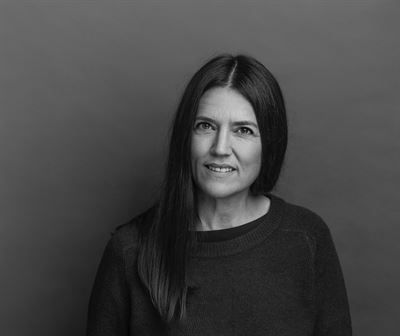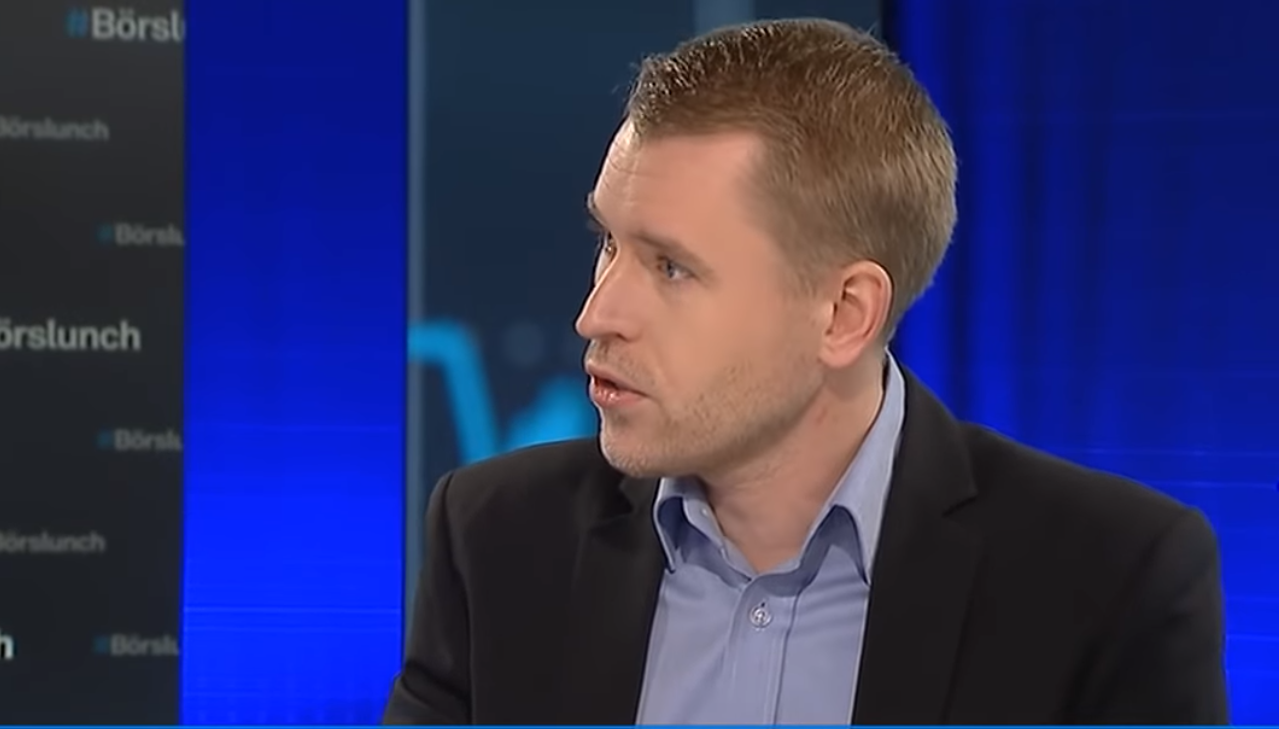Marknadsnyheter
Datopotamab deruxtecan-based combinations show promising clinical activity in patients with advanced non-small cell lung cancer
Late-breaking oral presentation at WCLC features first results from TROPION-Lung02 trial of AstraZeneca and Daiichi Sankyo’s TROP2-directed antibody drug conjugate.
Initial results from the TROPION-Lung02 Phase Ib trial showed that datopotamab deruxtecan (Dato-DXd) in combination with pembrolizumab with or without platinum chemotherapy demonstrated promising clinical activity and a tolerable safety profile in patients with previously untreated or pretreated, advanced or metastatic non-small cell lung cancer (NSCLC) without actionable genomic alterations. Results were presented during a late-breaking presentation (#MA13.07) today at the International Association for the Study of Lung Cancer 2022 World Conference on Lung Cancer (WCLC).
Datopotamab deruxtecan is a specifically designed TROP2-directed DXd antibody drug conjugate (ADC) being jointly developed by AstraZeneca and Daiichi Sankyo.
NSCLC is diagnosed at an advanced stage in nearly 50% of patients and often has a poor prognosis with worsening outcomes after each line of subsequent therapy.1-3 While 1st-line treatment consisting of immunotherapy with or without chemotherapy has improved outcomes for patients with NSCLC without actionable genomic alterations, disease progression still occurs in majority of patients and additional treatment strategies in this setting are needed.4,5
Benjamin Philip Levy, MD, Clinical Director of Medical Oncology, Johns Hopkins Sidney Kimmel Cancer Center at Sibley Memorial Hospital, Associate Professor of Oncology at Johns Hopkins University School of Medicine and investigator in the TROPION-Lung02 trial, said: “Many patients with advanced non-small cell lung cancer still experience disease progression following initial treatment, underscoring the need for new therapeutic approaches. The initial results from the TROPION-Lung02 trial show encouraging efficacy and safety results when combining datopotamab deruxtecan and pembrolizumab with or without platinum chemotherapy and warrant further study in the 1st-line metastatic setting.”
Cristian Massacesi, Chief Medical Officer and Oncology Chief Development Officer, AstraZeneca, said: “Building on preliminary findings of datopotamab deruxtecan combination therapy in triple-negative breast cancer shared earlier this year, these initial results from TROPION-Lung02 reflect the broader promise of combining existing treatments with antibody drug conjugates. We look forward to continuing this important research with the goal of providing a new, effective treatment option for patients with advanced non-small cell lung cancer.”
Gilles Gallant, Senior Vice President, Global Head, Oncology Development, Oncology R&D, Daiichi Sankyo, said: “These early findings from TROPION-Lung02 are promising and represent the first lung cancer trial to report results combining a TROP2-directed ADC with an immune checkpoint inhibitor with or without platinum chemotherapy in patients with advanced or metastatic non-small cell lung cancer. These data support the initiation of the TROPION-Lung08 Phase III trial to further evaluate datopotamab deruxtecan in combination with pembrolizumab as a 1st-line combination treatment in patients with advanced non-small cell lung cancer without actionable genomic alterations.”
An interim analysis of the ongoing TROPION-Lung02 trial in patients with previously untreated or pretreated, advanced or metastatic NSCLC without actionable genomic alterations demonstrated a promising overall response rate (ORR) in the overall population of 37% (median follow-up of 6.5 months) in patients treated with datopotamab deruxtecan and pembrolizumab (doublet therapy) and an ORR of 41% (median follow-up of 4.4 months) in patients receiving datopotamab deruxtecan, pembrolizumab and platinum chemotherapy (triplet therapy). A disease control rate (DCR) of 84% was seen with both the doublet and triplet combination therapy in the overall population that comprised both 1st-line and 2nd-line settings.
In previously untreated patients, ORRs of 62% (eight of the 13 patients receiving doublet therapy) and 50% (10 of 20 patients receiving triplet therapy) were observed. Eight partial responses (PRs) were seen in patients receiving doublet therapy and 10 PRs (three pending confirmation) were seen in patients receiving triplet therapy. A DCR of 100% was observed with doublet therapy and a DCR of 90% was observed with triplet therapy.
Combinations with datopotamab deruxtecan demonstrated a tolerable safety profile, which supports further evaluation in ongoing studies. Grade 3 or greater treatment-emergent adverse events (TEAEs) occurred in 40% and 60% of patients in the doublet and triplet cohorts, respectively. The most frequent TEAEs of any Grade in the doublet and triplet cohorts respectively were stomatitis (56% and 29%), nausea (41% and 48%), decreased appetite (28% and 38%), fatigue (25% and 36%) and anaemia (16% and 36%). There were four interstitial lung disease (ILD) events determined as drug-related by an independent adjudication committee across both cohorts; two were adjudicated as Grade 1/2 events and two were adjudicated as Grade 3 events. No Grade 4 or Grade 5 ILD events were adjudicated as drug-related. At the time of the data cut-off, there were three potential ILD events pending adjudication. Three deaths occurred (two within the doublet cohort, one in the triplet cohort), none of which were determined as drug-related. Treatment discontinuations due to adverse events occurred in less than 22% of patients and datopotamab deruxtecan dose discontinuation occurred in 13% of patients.
Patients in TROPION-Lung02 receiving doublet therapy were previously treated with one median line of therapy, including platinum chemotherapy (60%) and immunotherapy (30%). In the triplet cohort, patients previously received platinum chemotherapy (35%) and immunotherapy (38%). Datopotamab deruxtecan-based combination as a 1st-line of therapy accounted for 33% and 63% of patients in doublet and triplet cohorts, respectively. As of the 2 May 2022 data cut-off, 53% and 77% of patients remained on the doublet and triplet therapy, respectively.
Summary of TROPION-Lung02 results
| Overall Population | ||
| Doublet (n=40) | Triplet (n=48) | |
| Median Follow-Up | 6.5 months | 4.4 months |
| Efficacy Measure | Doublet (n=38) | Triplet (n=37) |
| ORR, % (confirmed and pending)1 | 37% | 41% |
| DCR, %2 | 84% | 84% |
| As 1st-Line Therapy | ||
| Efficacy Measure | Doublet (n=13) | Triplet (n=20) |
| ORR, %1 | 62% | 50% |
| PR, % (confirmed) | 62% | 35% |
| PR, % (pending confirmation) | 0% | 15% |
| DCR, %2 | 100% | 90% |
| As 2nd- or Later-Line Therapy | ||
| Efficacy Measure | Doublet (n=25) | Triplet (n=17) |
| ORR, % (confirmed and pending)1 | 24% | 29% |
DCR, disease control rate; ORR, overall response rate; PR, partial response; CR, complete response; SD, stable disease
1ORR is CR + PR
2DCR is CR + PR + SD
Notes
TROPION-Lung02
TROPION-Lung02 is an ongoing global, open-label, Phase Ib trial evaluating the safety and efficacy of datopotamab deruxtecan at two dose levels (4mg/kg and 6mg/kg) in combination with pembrolizumab (200mg) with or without platinum chemotherapy (carboplatin or cisplatin), in both previously untreated and pretreated patients with advanced or metastatic NSCLC without actionable genomic alterations (e.g., EGFR, ALK, ROS1, NTRK, BRAF, RET, MET or other known actionable alterations).
The primary endpoints of TROPION-Lung02 are dose-limiting toxicities and treatment-emergent adverse events. Secondary endpoints include ORR, duration of response, progression-free survival, overall survival, pharmacokinetics and anti-drug antibodies for datopotamab deruxtecan and pembrolizumab.
NSCLC
Lung cancer is the second most common cancer and the leading cause of cancer-related mortality worldwide.6 NSCLC is diagnosed at an advanced stage in nearly 50% of patients and often has a poor prognosis with worsening outcomes after each line of subsequent therapy.1-3 While the introduction of targeted therapies and checkpoint inhibitors in recent years have improved outcomes for patients with advanced NSCLC, the majority of tumours do not have known actionable genomic alterations.7-10 Current standard of care in the first-line treatment of patients with advanced NSCLC without actionable genomic alterations is immunotherapy with or without platinum-based chemotherapy, based upon PD-L1 expression. While these therapies may improve survival, at least 40 to 60% of tumours do not respond to initial treatment and disease progression occurs, underscoring the need for new therapeutic approaches and options.11-14
TROP2 in NSCLC
TROP2 (trophoblast cell-surface antigen 2) is a transmembrane glycoprotein that is widely expressed in several types of solid tumours, including NSCLC.15-18 While TROP2 is expressed across all lung cancer subtypes, the highest expression is seen in adenocarcinoma (64%) and squamous cell carcinoma (75%) cases (the most common forms of NSCLC).17,19 No TROP2-directed therapies are currently approved for the treatment of patients with NSCLC.14,20,21
Datopotamab deruxtecan (Dato-DXd)
Datopotamab deruxtecan (Dato-DXd) is an investigational TROP2-directed ADC. Designed using Daiichi Sankyo’s proprietary DXd ADC technology, datopotamab deruxtecan is one of the most advanced programmes in AstraZeneca’s ADC scientific platform, and one of the three leading ADCs in the oncology pipeline of Daiichi Sankyo. Datopotamab deruxtecan is comprised of a humanised anti-TROP2 IgG1 monoclonal antibody, developed in collaboration with Sapporo Medical University, attached to a number of topoisomerase I inhibitor payloads, an exatecan derivative, via tetrapeptide-based cleavable linkers.
A comprehensive development programme called TROPION is underway globally with trials evaluating the efficacy and safety of datopotamab deruxtecan across multiple solid tumours, including triple negative breast cancer, HR-positive/HER2-negative breast cancer, NSCLC, small cell lung cancer, urothelial, gastric and oesophageal cancer. Trials in combination with other anticancer treatments, such as immunotherapy, also are underway.
Daiichi Sankyo collaboration
Daiichi Sankyo Limited (TSE: 4568) [referred to as Daiichi Sankyo] and AstraZeneca entered into a global collaboration to jointly develop and commercialise datopotamab deruxtecan in July 2020, except in Japan where Daiichi Sankyo maintains exclusive rights. Daiichi Sankyo is responsible for the manufacturing and supply of datopotamab deruxtecan.
AstraZeneca in lung cancer
AstraZeneca is working to bring patients with lung cancer closer to cure through the detection and treatment of early-stage disease, while also pushing the boundaries of science to improve outcomes in the resistant and advanced settings. By defining new therapeutic targets and investigating innovative approaches, the Company aims to match medicines to the patients who can benefit most.
The Company’s comprehensive portfolio includes leading lung cancer medicines and the next wave of innovations, including Tagrisso (osimertinib) and Iressa (gefitinib); Imfinzi (durvalumab) and tremelimumab; Enhertu (trastuzumab deruxtecan) and datopotamab deruxtecan in collaboration with Daiichi Sankyo; Orpathys (savolitinib) in collaboration with HUTCHMED; as well as a pipeline of potential new medicines and combinations across diverse mechanisms of action.
AstraZeneca is a founding member of the Lung Ambition Alliance, a global coalition working to accelerate innovation and deliver meaningful improvements for people with lung cancer, including and beyond treatment.
AstraZeneca in oncology
AstraZeneca is leading a revolution in oncology with the ambition to provide cures for cancer in every form, following the science to understand cancer and all its complexities to discover, develop and deliver life-changing medicines to patients.
The Company’s focus is on some of the most challenging cancers. It is through persistent innovation that AstraZeneca has built one of the most diverse portfolios and pipelines in the industry, with the potential to catalyse changes in the practice of medicine and transform the patient experience.
AstraZeneca has the vision to redefine cancer care and, one day, eliminate cancer as a cause of death.
AstraZeneca
AstraZeneca (LSE/STO/Nasdaq: AZN) is a global, science-led biopharmaceutical company that focuses on the discovery, development, and commercialisation of prescription medicines in Oncology, Rare Diseases, and BioPharmaceuticals, including Cardiovascular, Renal & Metabolism, and Respiratory & Immunology. Based in Cambridge, UK, AstraZeneca operates in over 100 countries and its innovative medicines are used by millions of patients worldwide. Please visit astrazeneca.com and follow the Company on Twitter @AstraZeneca.
Contacts
For details on how to contact the Investor Relations Team, please click here. For Media contacts, click here.
References
- Siegel R, et al. Cancer Statistics 2021. CA Cancer J Clin. 2021;71:7-33.
- Centers for Disease Control and Prevention and National Cancer Institute. U.S. Cancer Statistics Working Group. U.S. Cancer Statistics Data Visualizations Tool, based on 2021 submission data (1999-2019); www.cdc.gov/cancer/dataviz, released in June 2022.
- Hardstock F, et al. Real-world treatment and survival of patients with advanced non-small cell lung Cancer: a German retrospective data analysis. BMC Cancer. 2020;20(1):260.
- Shields MD, et al. Immunotherapy for Advanced Non–Small Cell Lung Cancer: A Decade of Progress. Am Soc Clin Oncol Educ Book. 2021;41:1-23.
- Walsh RJ, et al. Resistance to immune checkpoint inhibitors in non-small cell lung cancer: biomarkers and therapeutic strategies. Ther Adv Med Oncol. 2020;12:1758835920937902.
- World Health Organization. International Agency for Research on Cancer. Lung Fact Sheet. Accessed August 2022.
- Chen R, et al. Emerging Therapeutic Agents for Advanced Non-Small Cell Lung Cancer. J Hematol Oncol. 2020;13(1):58.
- Majeed U, et al. Targeted therapy in advanced non-small cell lung cancer: current advances and future trends. J Hematol Oncol. 2021; 14(1): 108.
- Adib E, et al. Variation in Targetable Genomic Alterations in Non-Small Cell Lung Cancer by Genetic Ancestry, Sex, Smoking History, And Histology. Genome Med. 2022; 14(1): 39.
- Bubendorf L, et al. Nonsmall cell lung carcinoma: diagnostic difficulties in small biopsies and cytological specimens: Number 2 in the Series “Pathology for the clinician” Edited by Peter Dorfmüller and Alberto Cavazza. Eur Respir Rev. 2017; 26(144): 170007.
- Paz-Ares L, et al. A Randomized, Placebo-Controlled Trial of Pembrolizumab Plus Chemotherapy in Patients With Metastatic Squamous NSCLC: Protocol-Specified Final Analysis of KEYNOTE-407J. Thorac Oncol. 2020 Oct;15(10):1657-1669.
- Mok TSK, et al. Pembrolizumab versus chemotherapy for previously untreated, PD-L1-expressing, locally advanced or metastatic non-small-cell lung cancer (KEYNOTE-042): a randomised, open-label, controlled, phase 3 trial. Lancet. 2019 May 4;393(10183):1819-1830.
- Brahmer J.R. et al. KEYNOTE-024 5-year OS update. ESMO 2021 Virtual Congress. 2021 Sept 16 – 20; Abstract LBA51.
- Rodríguez-Abreu D et al. Pemetrexed plus platinum with or without pembrolizumab in patients with previously untreated metastatic nonsquamous NSCLC: protocol-specified final analysis from KEYNOTE-189. Ann Onc. 2021 Jul;32(7):881-895.
- McDougall ARA, et al. Trop2: From Development to Disease. Devel Dynamics. 2015; 244: 99-109.
- Shvartsur A, et al. Trop2 and its overexpression in cancers: regulation and clinical/therapeutic implications. Genes Cancer. 2015; 6 (3-4): 84-105.
- Inamura K, et al. Oncotarget. 2017; 8(17):28725-28735. Inamura K, et al. Association of tumor TROP2 expression with prognosis varies among lung cancer subtypes. Oncotarget. 2017; 8(17): 28725-28735.
- Goldenberg DM, et al. The emergence of trophoblast cell-surface antigen 2 (TROP-2) as a novel cancer target. Oncotarget. 2018; 9(48): 28989-29006.
- Mito R, et al. Clinical impact of TROP2 in non-small lung cancers and its correlation with abnormal p53 nuclear accumulation. Pathol Int. 2020; 70(5): 287-294.
- Zaman S, et al. Targeting Trop-2 in solid tumours: future prospects. Onco Targets Ther. 2019; 12: 1781-1790.
- American Cancer Society. Targeted Drug Therapy for Non-Small Cell Lung Cancer. Available at: https://www.cancer.org/cancer/lung-cancer/treating-non-small-cell/targeted-therapies.html. Accessed July 2022.
Marknadsnyheter
Regeringen föreslår lättnader i byggkraven för studentbostäder
Regeringen har beslutat om en lagrådsremiss med förslag till lättnader i byggkraven för studentbostäder. Syftet är att öka möjligheterna till flexibilitet vid byggandet.
– På många studieorter är det svårt för studenter att hitta boende. Därför behöver byggregelverket förenklas. Syftet är att möjliggöra för fler studentbostäder genom sänkta byggkostnader och ökad flexibilitet, säger infrastruktur- och bostadsminister Andreas Carlson.
Förslaget innebär att det blir möjligt att göra undantag från kraven på tillgänglighet och användbarhet i en byggnad som innehåller studentbostäder. Undantagen ska kunna tillämpas vid både nyproduktion och vid ändring av en byggnad.
Det ska vara möjligt att göra undantag för högst 80 procent av studentbostäderna i ett byggprojekt. Minst 20 procent av studentbostäderna ska fortfarande uppfylla gällande krav på tillgänglighet och användbarhet för personer med nedsatt rörelse- eller orienteringsförmåga.
Lagändringen ger större flexibilitet vid byggande av studentbostäder och skapar fler tänkbara sätt att utforma planlösningar. Till exempel kan bostadsytan minskas och fler bostäder rymmas inom en given yta.
De föreslagna undantagen ska inte hindra personer med funktionsnedsättning att vara delaktiga i sociala sammanhang. En studentbostad som omfattas av undantagen ska kunna besökas av en person med nedsatt rörelse- eller orienteringsförmåga.
Regeringen breddar också definitionen av studentbostäder till att inkludera all vuxenutbildning för att göra det möjligt för fler kommuner att erbjuda studentbostäder.
Förslagen föreslås träda i kraft den 1 juli 2025.
Lagrådsremissen: Lättnader i byggkraven för studentbostäder – Regeringen.se
Presskontakt
Ebba Gustavsson
Pressekreterare hos infrastruktur- och bostadsminister Andreas Carlson
Telefon (växel) 08-405 10 00
Mobil 076-12 70 488
ebba.gustavsson@regeringskansliet.se
Marknadsnyheter
Bönor från egen kaffeskog, sump till jord – Viking Lines nya kaffe gör gott på många olika sätt


Viking Lines resenärer dricker varje år 8,5 miljoner koppar kaffe. Nu satsar rederiet på ett helt nytt kaffe som ger minskade klimatutsläpp och bättre levnadsvillkor för odlarna. Kaffet från Slow Forest odlas på rederiets egen odling i Laos utan kemiska gödningsmedel, handplockas och rostas därefter i Danmark.
Allt kaffe som serveras på Viking Lines fartyg är nu hållbart producerat Slow Forest-kaffe, odlat på rederiets 75 hektar stora odling på högplatåerna i Laos och rostat i Danmark. Kaffeplantorna odlas bland träd på återbeskogad mark, i stället för på traditionellt skövlade plantager. Viking Lines odling ligger i en kolsänka där målsättningen är att plantera 30 000 träd, vilket innebär nästan 400 träd per hektar. Kaffeskogen förbättrar också den lokala biologiska mångfalden i området.
Odlingen, bearbetningen och rostningen av kaffet hanteras av Slow Forest Coffee. För företaget är det viktigt att produktionskedjan är rättvis och transparent. Utöver miljöfördelarna erbjuder Slow Forest bättre lönevillkor och sjukersättning för byns odlare.
”Den traditionella kaffetillverkningens koldioxidavtryck är stort och merparten av intäkterna går till Europa i stället för produktionsländerna. Vi ville göra annorlunda. Våra kunder vill göra hållbara val, och nu kan de njuta av sitt kaffe med bättre samvete än någonsin tidigare,” berättar Viking Lines restaurangchef Janne Lindholm.
Bönorna till Slow Forest-kaffet får sakta mogna i skuggan av träden, utan kemiska gödningsmedel. De plockas också för hand, vilket avsevärt förbättrar kaffets kvalitet och smak. Viking Lines nya kaffe består till 100 procent av Arabica-bönor, med en balanserad syrlighet samt smak av nötter och choklad. Rostningsprofilen har skapats av den världsberömda danska rostningsmästaren Michael de Renouard.
”Vi valde en mörkrost till fartygets kaffe, vilket passar både finländarnas och svenskarnas nuvarande smakpreferenser gällande rostning. Finländarnas smak gällande kaffe har under de senaste åren utvecklats mot en mörkare rostning. Innan vi gjorde vårt slutgiltiga val testades det nya kaffet i Viking Cinderellas bufférestaurang och personalmässen – och båda testgrupperna gav toppbetyg. Då 8,5 miljoner koppar kaffe bryggs varje år kan inget lämnas åt slumpen!” säger Janne Lindholm.
Viking Lines hållbarhetsmål stannar inte vid produktionskedjan. Kaffesump från fartygen återvinns nämligen som råmaterial för trädgårdsjord. Detta minskar avsevärt användningen av jungfrulig torv vid tillverkningen av mylla.
”Vi har som mål att allt som tagits ombord på fartygen som är möjligt att återvinna ska återanvändas eller återvinnas. Det gäller inte bara kaffet utan även matavfall och till exempel textilier som tas ur bruk. Ett bra exempel på vårt livscykeltänkande är att frityrolja från fartygets restauranger blir till biobränsle för den finska sjöfartsindustrin,” säger Viking Lines hållbarhetschef Dani Lindberg.
Slow Forest Coffee – 5 fakta:
- Slow Forest Coffee är ett kaffeföretag som verkar i Laos, Vietnam och Indonesien i samarbete med över 500 lokala kaffeodlare.
- Företaget grundades år 2019 av Pinja Puustjärvi, driven av en vilja att skydda skogarna i Laos och stötta lokala odlare. Puustjärvi bodde som barn i Laos på grund av sin fars arbete.
- Kaffet odlas i restaurerade kaffeskogar, som binder stora mängder kol och ökar den biologiska mångfalden.
- Det är viktigt för företaget att produktionskedjan är ansvarsfull och transparent, samt att verksamheten gynnar både miljön och de lokala samhällena.
- Slow Forest Coffee betalar odlarna bättre ersättning än genomsnittet i Laos och erbjuder förmåner som underlättar deras liv: förskottsbetalningar, utbildning och möjligheten att låna pengar från en krisfond.
Mera infomation om Slow Forest Coffee här
Tilläggsinformation:
Janne Lindholm, restaurangchef
janne.lindholm@vikingline.com, tel. +358 400 744 806
Dani Lindberg, hållbarhetschef
dani.lindberg@vikingline.com, tel. +358 18 27 000
Johanna Boijer-Svahnström, informationsdirektör
johanna.boijer@vikingline.com, tel. +358 18 270 00
Christa Grönlund, informationschef
christa.gronlund@vikingline.com, tel. +358 9 123 51
Marknadsnyheter
“Vi behöver tillsammans enas om vettiga avtal, som sätter standard för branschen”


Sveriges Radios Kulturnytt gör just nu en mycket välkommen granskning av villkoren i musikbranschen. Igår lyftes artisten Siw Malmkvists situation med ett avtal som inte förnyats på över 60 år. Hennes situation är tyvärr långt ifrån unik. Musikerförbundet har länge uppmärksammat att majorbolagen fortsätter att betala extremt låga royaltynivåer till artister vars kontrakt skrevs på 1960-talet – en tid då digital streaming inte existerade.
– Jag kan intyga att artisterna som talar ut i P1 är långt ifrån ensamma om sin situation och vi uppmanar deras artistkollegor att gå ut med sitt tydliga stöd till de som vågar bryta tystnaden om oskäliga ersättningar, säger Musikerförbundets ordförande Karin Inde.
Musiker och artister skapar det värde som skivbolagen tjänar pengar på, men ändå ser vi gång på gång hur bolagen behåller stora delar av intäkterna. Att en av Sveriges mest folkkära artister, med en karriär som sträcker sig över decennier, fortfarande har en oskälig royalty är ett tydligt bevis på branschens obalans.
– Tystnadskulturen kring prissättning är enbart bra för bolagen. Både artister och musiker skulle verkligen tjäna på att dela med sig till varandra om hur betalningar och dealar verkligen ser ut. Förstås i trygga, egna rum. Det är bara bolagen som tjänar på att vi inte pratar med varandra om pengar, säger Karin Inde.
Stort tack till de modiga artister som ser till att lyfta problematiken! För att vi ska få till en i grunden mer rättvis musikbransch behöver de stora parterna i sammanhanget – skivbolagen, musikerna och artisterna – göra som de flesta andra svenska branscher lyckas med:
– Vi behöver tillsammans enas om vettiga och balanserade avtal, som sätter standard för branschen. Musikerförbundet är redo att göra vår del i arbetet för bättre villkor i musikbranschen, frågan är om skivbolagen är redo, säger Karin Inde.
Karin Inde
Förbundsordförande
karin.inde@musikerforbundet.se
+46 (0)704447228
Musikerförbundet är fackförbundet för professionella musiker och artister. Vi arbetar för förbättrade upphovsrättsliga och arbetsrättsliga villkor och för att våra medlemmar ska få en rättvis del av de värden de skapar i samhället.
-
Analys från DailyFX10 år ago
EUR/USD Flirts with Monthly Close Under 30 Year Trendline
-

 Marknadsnyheter2 år ago
Marknadsnyheter2 år agoUpptäck de bästa verktygen för att analysera Bitcoin!
-
Marknadsnyheter5 år ago
BrainCool AB (publ): erhåller bidrag (grant) om 0,9 MSEK från Vinnova för bolagets projekt inom behandling av covid-19 patienter med hög feber
-
Analys från DailyFX12 år ago
Japanese Yen Breakout or Fakeout? ZAR/JPY May Provide the Answer
-

 Marknadsnyheter2 år ago
Marknadsnyheter2 år agoDärför föredrar svenska spelare att spela via mobiltelefonen
-
Analys från DailyFX12 år ago
Price & Time: Key Levels to Watch in the Aftermath of NFP
-
Analys från DailyFX8 år ago
Gold Prices Falter at Resistance: Is the Bullish Run Finished?
-

 Nyheter7 år ago
Nyheter7 år agoTeknisk analys med Martin Hallström och Nils Brobacke

